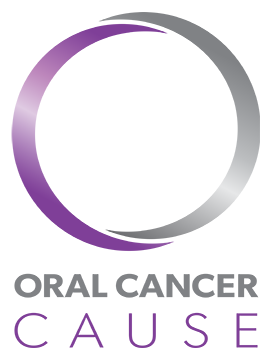For more than a decade, there has been an increase in occurrence of head and neck cancers in the United States. Head and neck cancers include those occurring in the lips, mouth, tongue, and throat. These cancers are often referred to as oral cancer or oropharyngeal (back of the mouth and throat) cancer. Approximately 49,750 people in the United States will be diagnosed with oral or oropharyngeal cancer in 2017. Worldwide, new cases of oral and oropharyngeal cancer exceed a devastating 640,000 people per year.
There are two distinct pathways by which most people develop oral cancer. The one most familiar is through the use of tobacco and alcohol, and the other is through exposure to the HPV-16 virus (human papilloma virus, version 16). HPV-16 is a more recently identified etiology, and the same one that is responsible for the vast majority of cervical cancers in women.
In less than 7% of oral cancer cases, there is no known cause and it is believed that these cancers are related to a genetic predisposition.
While oral and oropharyngeal cancers are still considered uncommon, approximately 132 people in the US are diagnosed each day and one person dies from oral cancer every hour of every day. This sobering statistic has not improved in many years.
Oral cancers have an 80%-90% survival rate when found at early stages. Unfortunately, the majority of oral cancers are found in the late stages and this is the reason for the very high five-year death rate of 43%.
Late-stage diagnosis is said to be a result of many complex conditions including a lack of public awareness and a lack of professional screenings in dental and medical offices.
Oral Cancer Cause will pursue current research and interview experts in the field of head and neck cancer to bring you the most current information about risk factors that lead to oral cancer, signs and symptoms, treatment, side effects and complications of treatment, nutrition, and oral cancer related news.
The Role of the Dental Professional
The dental community must take a leadership role as the first line of defense in the early detection of oral cancer. The American Dental Association states that 60% of the US populations sees a dentist every year. Oral Cancer Cause joins other forward-thinking communities in encouraging every dentist and dental hygienist to perform a complete oral cancer screening for every patient at every appointment. All dental schools teach a head and neck cancer screening examination and our Oral Cancer Cause consultants teach an elegant, spa-like screening that patient’s enjoy and that takes only minutes to perform. The excuse that some dental professionals give for not performing this potentially life-saving screening is that it’s too time consuming. This is absolutely false as the exam can be completed in less than five minutes. An informed public who understands the importance of a head and neck cancer screening and who demands this screening at every regular dental visit will help move all dental professionals to provide this critical service.
Historically, increased public awareness of the importance of pap smears, mammograms, and PSA screenings have led to an increase in early detection of uterine, breast, and prostate cancers, which has led to a decrease in mortality due to these diseases.
Oral cancer screening is non-invasive, painless, and inexpensive so it would seem it should be easier to get both professional and public compliance with oral cancer screenings than any of the other screenings noted. Unfortunately, studies show that fewer than 15%-25% of people who visit a dentist regularly report having had an oral cancer screening. (Horowitz et al). It is possible that some people are receiving a head and neck cancer screening but they are unaware because the dental clinician fails to inform the patient of what is being done. Some clinicians report that they do the screening but simply say they’re looking for “lumps or bumps” in an effort to avoid alarming the patient by using the “C” word. This is a missed opportunity to educate and inform our patients of the risks of oral cancer and the importance of regular screenings. It’s also a missed opportunity to increase the value of the appointment.
When the oral cancer screening is done, it is often performed by a registered dental hygienist who is well qualified to do so. The dental hygienist will bring any suspect areas to the attention of the doctor for further examination.
We at Oral Cancer Cause will focus our efforts on increasing the awareness of both dental professionals and the public that a dental appointment is more than just a cleaning or a filling – it could be a matter of life or death. If you are a dental patient, please ASK for an oral cancer screening at every regular dental visit if that is not already a part of your caregivers’ practice. If you are a dental professional, please include this potentially life-saving protocol into your practice. If you need assistance with implementing head and neck cancer screenings in your practice, please contact Kathryn@periolinks.com.
Written By: Kathryn Gilliam, BA, RDH, FAAOSH
Educational Information for those affected with head and neck cancer and those who love them.

Recent Comments